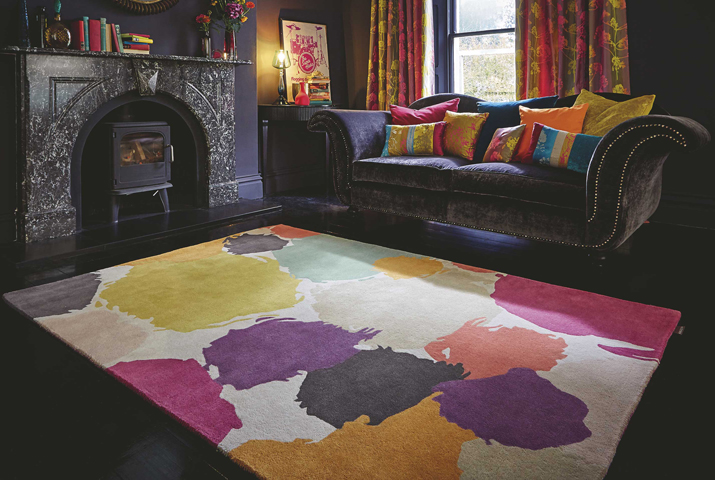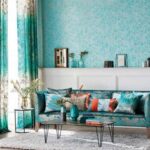Buying a rug can be complicated. Firstly, they can be expensive, and secondly, they’re definitely one of those things you can easily make a mistake with; such as buying the wrong size or buying a rug that follows a trend so that it doesn’t feel like a timeless piece in your room.
When buying a rug, bigger is better, but you don’t want anything that is so big it touches the skirting boards because it’s too oversized. A well proportioned rug can make a room feel welcoming and expansive. A small rug can be lost in a large room or can divide it in a way that prevents a room from looking polished and complete. An ideal rug will leave a foot or two of border around each edge but will fill your floor space.
However, a large rug might not be practical for the space, especially in open plan rooms, so another way to determine size is to make sure your rug connects the furniture in the room, helping you to define a functional area. Visually, a rug can help you to create different zones if you have an open floor plan, defining each room whilst maintaining open plan flow.
Rugs can also add interest and colour to a room when laid over a plain coloured carpet; however, you need to make sure that the colours in the rug work well with the colours in your room, so that it doesn’t just call attention to the centre of the space. Patterns woven in cut and uncut pile, and variegated pile rugs, are a luxurious way to add additional texture and colour through tonal transition.
Natural material rugs, such as thick hand-tufted pure new wool rugs, cotton flat weaves and natural fibre rugs such as sisal or jute feel wonderful underfoot, wear exceptionally well over time, and are also easy to clean. Longevity is essential, and semi-synthetic fibres such as bamboo viscose, which gives a lustrous variation to the pile, to blended tencel and wool yarns that have a durable composition, magnificent softness and vibrance of colour are popular choices for a hard-wearing rug.



